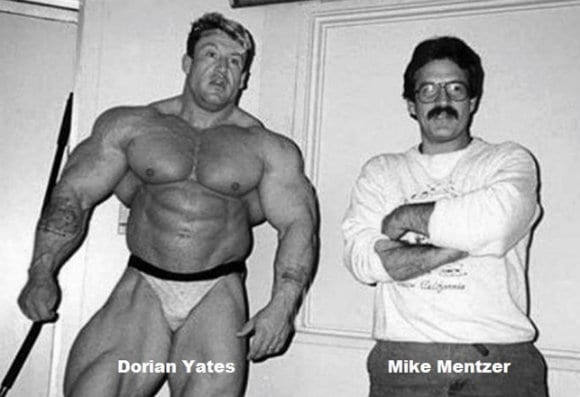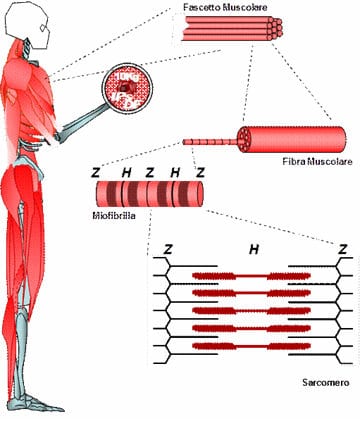By the healthiergang writer Domenico Capodiferro, doctor specializing in Sports Medicine.
Train Every DayLet's start with some history ..
1. Arnold Schwarzenegger
In the beginning there were Arnold Schwarzenegger and his "snack companions" of the Gold's Gym di Venice Beach, a neighborhood in Los Angeles, California (among many, I quote with great pleasure one of our countrymen, Franco Columbu, originally from Ollolai, Sardinia, Arnold's faithful training partner and two-time winner of the Mr Olympia title).

It was the beginning of the 70s and the watchword was only one: volume! Gold's Gym bodybuilders used to train not less than 6 times a week, for 3-4 hours a day, usually divided into 2 sessions (morning and afternoon) ... practically, it can be said that they lived in the gym! Arnold & co. they were the undisputed reference point and all bodybuilders in the world tried to emulate them, so this style of training spread like wildfire and no one dared to contest its principles for years.
2. Dorian Yates
But let's take a leap forward about two decades. In the early 90s, Dorian Yates, a young Englishman coming from Birmingham, a working-class city and practically the opposite of the exotic and fascinating Los Angeles, establishes himself as the best bodybuilder in the world for 6 years in a row (from 1992 to 1997) and interrupts the almost total hegemony of athletes born and / or residents in the United States, almost all conforming to the dictates and, I dare say, to the "dogmas" advocated by the followers of Gold's Gym.
Dorian's approach was shamelessly iconoclastic: 4 workouts per week with an effective duration of 45-60 minutes each. Therefore low volume and relatively higher intensity training (in reality the concept of high intensity and low volume training had already been known for some years and had achieved a fair notoriety thanks to Mike Mentzer at the turn of the 80s, but it was above all thanks to Dorian Yates that he established himself to the general public).

The encounter-clash between these two such antithetical approaches it has generated (and still generates) a heated debate at various levels: countless scientific studies have dealt with establishing whether there is a training method that is clearly superior to the others; outside the more purely scientific and academic sphere, moreover, many trainers and athletes from all over the world, thanks to the spread of the internet, have shared their experience, contributing to the growth of knowledge from a high level, but also fomenting real and own feuds, still unresolved, regarding the diatribe train "a lot" vs train "little".
A little science
 The idea of training every day, and maybe even for several hours a day, comes from the intuitive feedback for which thetraining it hypertrophies the muscle and improves its performance. Trivial huh ?! Nothing shocking so far.
The idea of training every day, and maybe even for several hours a day, comes from the intuitive feedback for which thetraining it hypertrophies the muscle and improves its performance. Trivial huh ?! Nothing shocking so far.
If I train one hour a day, 3-4 days a week, my muscles will swell and their performance will increase.
What if you want to get even more muscular? Nothing could be easier: just train more often, maybe every day; and to improve further, just increase the hours you spend in the gym!
… Unfortunately, in the vast majority of cases this is not the case! If I train 3 times a week and I get a certain result, it is not at all certain that by training 6 times a week I will obtain a result equal to double the previous one. Indeed, if the total volume of training exceeds a certain threshold, I could obtain a result that not only does not improve proportionally, but even worsens inexorably (in US gyms the saying is famous "less is more! ").
To shed some light, I will try to explain in a simple and schematic way what happens at the cellular level: training causes micro-injuries to the muscle myofibrils (of the structures that are inside the muscle cells and that constitute the apparatus responsible for the contraction); during rest, our body repairs these injuries.
However, this repair is not a simple reset of the pre-workout situation, but the fiber is remodeled in such a way as to be thicker, in order to be stronger and therefore resist if a stress (in our case training) should re-occur to which to cope. This is the main mechanism of muscle hypertrophy.
In order for this phenomenon of repair and contextual enlargement to take place effectively, two main elements are necessary: rest e nutrients.
1. Rest
È necessario rest, that is, do not subject the newly trained muscle group to further stress, since the complex cellular phenomena that underlie the process of rehashing the contractile fibers are substantially incompatible with the equally complex phenomena that occur during muscle contraction.
To make a comparison accessible to all, we can imagine that our muscles are a formula 1 car: muscle contraction is similar to the car racing on the track, while rest is the equivalent of refueling in the pits. During the latter the engine must be switched off and the car stopped, as well as refueling while the car is running.
2. Nutrients
Speaking of nutrients, an adequate intake of fundamental amino acids, which are the building blocks used to repair myofibrils (myofibrils are macromolecules formed by a set of proteins, which in turn are composed of amino acids).
Furthermore, although not directly related to the process of reworking of contractile structures, carbohydrate intake close to training is important to restore muscle glycogen stores, which have been depleted by training.
How much rest? Which and How Many Nutrients?
In all honesty, I tell you that I am unable to provide answers that will fit everyone because the issue is very complex and depends on countless factors, both modifiable (training style, rest, nutrition and integration, neuro-psychological factors, possible use of doping drugs) and unchangeable (genetic potential and age).
Therefore I advise you to be wary of those who will try to offer you an absolute truth about all these unknowns, because, simply, there is no absolute truth.
Then, what to do? What frequency and volume of training is it better to adopt?
A good compromise must be found between training volume and rest.
PS.Would you like to know more? Read on here.


























